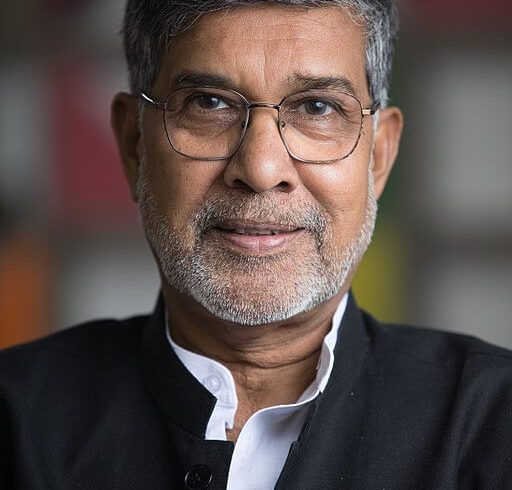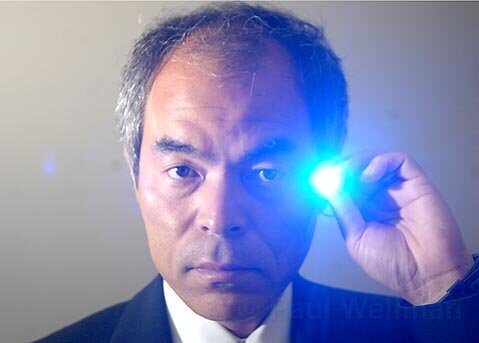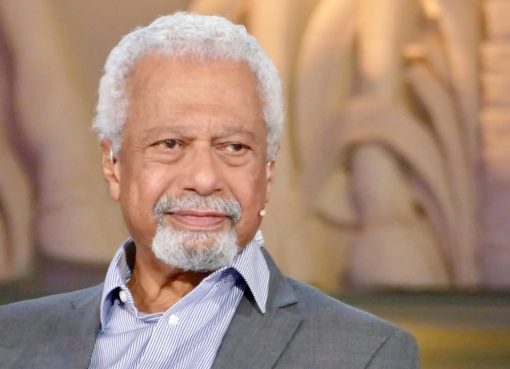It has been for the last five issues of BioNE that I have been writing in this section, focusing short and inspiring stories of Nobel Laureates, but this issue is indeed very special for me because I am writing about a fellow Indian, who made the nation proud by winning Nobel Peace Prize in the year 2014 for his invaluable contribution in making this world a better and safer place for the children. Yes, I am talking about the founder of Bachpan Bachao Andolon (translation: Save Childhood Movement), Mr. Kailash Satyarthi.
Kailash Satyarthi was born as Kailash Sharma on 11 January, 1954 in an upper caste Hindu family in the Vidisha District of Madhya Pradesh to become Kailash Satyarthi in his later life. I thought mentioning the words “upper caste” is contextual as during the days of early independence, the caste system, deeply rooted in the Indian society, was one of the very strong social determinants and the conversion of Kailash from “Sharma” to “Satyarthi” is also very much linked to this evil system of the society.
Kailash Sharma started his schooling in a local primary school along with his peers. His childhood passed through a very eventful social and political environment. In early 1950s, the British have just left the country and as a young nation, every sphere of life in India was in a state of transition. Throughout the country, there was conflict of ethics, values and morals. A section of the society was the believer of Gandhian ideology and was opposing the prevailing caste system; on the other hand, there were conservative preachers as well. Kailash’s native Vidisha was also going through the same situation. Being a member of the upper caste in the society, they (Kailash’s family) were the privileged class, and were having the easy access to the then modern and comfortable means of life. On the other hand, the lower caste people were the marginalized and poverty ridden faction of the society having not even access to the basic needs of life. Young Kailash, growing up amidst these contrasts of the society, was deeply influenced and he felt pain within his empathic mind on seeing lower castes continuously being betrayed by life and ill-behaved by the upper caste.
Time passed by and Kailash Sharma entered high school and became socially more active and aware. He strongly felt that something is to be done to break the caste system and the untouchability. As a 15 year boy, he was impressed by the public address of some of the political leaders of that time for the fact that they looked true Gandhians and were very vocal against social inequality and untouchabilty. Kailash felt that his efforts to work for social equality is going to be much easier as the upper caste political class was in its favour and they have the ability to convince the population at large. He met many of them and talked personally and got very encouraging response.
Kailash took this patronage from the political class very seriously and he planned to organize a social dinner at a local park having a newly erected statue of the Father of the Nation Gandhiji, in which the food will be cooked by women from lower caste and invitees from both higher and lower castes will sit together to have the lunch. Accordingly, Kailash and his friends made preparations for the event and invited the higher caste local politicians and social leaders, all of whom agreed to be there. On the day of the lunch, Dalit women clad in completely new dress assembled in the park in groups and started preparing food in a very hygienic way. Finally, the meal was ready in time and they were waiting for the guests to arrive. Minutes turned into hours, sun was also about to set but there was no trace of their guests. Anxious Kailash and his friends waited till evening without any guest in the park. He was aghast and appalled with the double standard of the leaders and their apathy towards the social change. At about 9.00 pm, Kailash sat down to have food and burst into tears while having the meal. Shattered, disappointed and emotionally drained, Kailash Sharma returned home at that night by dragging his cycle and found that there was a gathering of about 15-20 people in their courtyard. On entering the campus, he could see numbers of village priests were talking with his elder brother, and his mother and sister-in-law were crying inconsolably. As he approached them to know what the reason was, his elder brother shouted at him and told that he (Kailash) had committed a sin by eating the impure food prepared by Dalits. All in the family were very disappointed with his actions and the priests started telling that his family is going to be excoriated by the community because of the sin. Kailash requested the priests that the family should not be made victim because of his mistakes and the punishment should only be restricted to him. The adamant priests then given him an offer to re-purify himself and save the family from being excoriated. To do that, he will have to bring water from the river Ganga and have to wash the feet of the priests to finally drink the wash water after washing their feet. This made Kailash agitated and he refused to follow their method of purification. On hearing this, the priests instructed the family to disown Kailash and to make his living separate from the family to save themselves from the excoriation.
Out-casted by the family and the community, Kailash went to bed to spend rest of the night sleepless, introspecting within himself to realize the hypocrisy of the society and the system. On that fateful night, Kailash took a very bold decision to disown his surname “Sharma”, which was reflecting his association with an upper caste and “Kailash Sharma” became Kailash to finally adopt a new surname “Satyarthi” meaning the “seeker of truth”, after a few years.
In his later life, Kailash Satyarthi graduated from a High School and joined Samrat Ashok Technological Institute in Vidisha as a B.E. student in Electrical Engineering to finally have masters in the same field. For a brief period, he also worked as a lecturer in a local college but left that job and started working full time for the betterment of the children from the poor and marginalized section of the society. In the year 1980, he founded the Bachpan Bachao Andolon and to date, Kailash Satyarthi and his team have liberated more than 86,000 children in India from child labour, slavery and trafficking.




